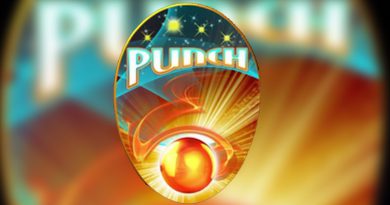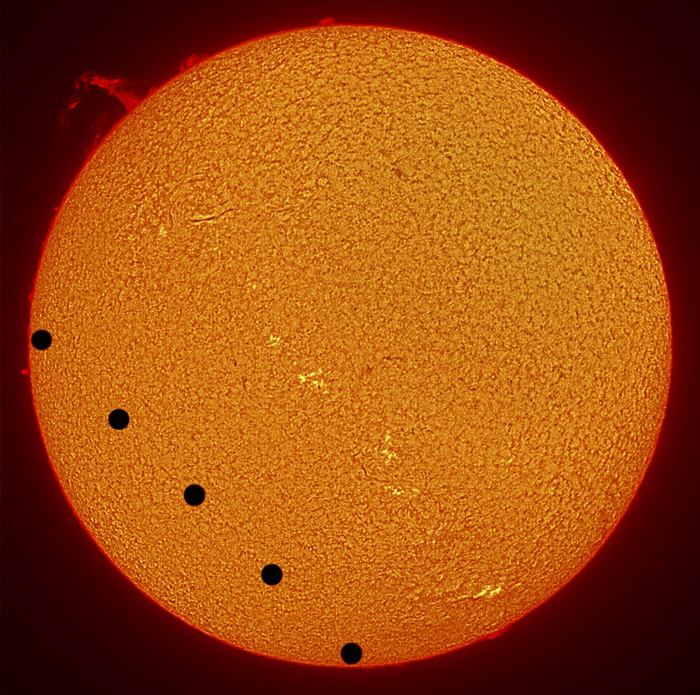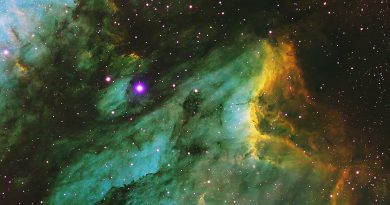Tele Vue’s 2018!
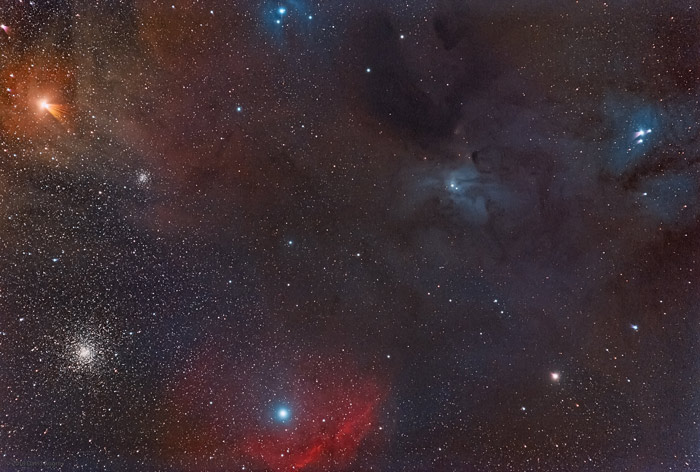
It’s hard to believe that our blog has been posting articles for two solid years already. We didn’t note it at the time, but our post “odometer” rolled past 100 this October. Our 101st post was Tele Vue-NP101is Imaging the Skies of Rhode Island! It featured David Augros’ images from a dark-site on Rhode Island with a Tele Vue-NP101is using our Large Field Corrector and modified Canon EOS 6D DSLR. He chose that scope because it offered “a nice balance between a generous wide field and fine details in my final images.”

That post was followed by “Tele Vue: We’ll Always Have Paris” about Tele Vue President David Nagler’s look back at past “Rencontres du Ciel et de l’Espace” (RCE) telescope shows as he prepared to leave for the 2018 edition at the Museum of Science and Industry in Paris. While admitting to not speaking a word of French (even though he’s been attending since 2006!) David somehow is able to communicate in what he calls “in the language of the telescope”.
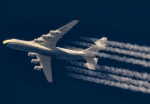
Tele Vue users are amazing and find ways to use our products that we didn’t think of. We’d noticed a proliferation of close-up plane images on Instagram made using Tele Vue Powermate™ image amplifiers from plane spotters in Poland. This setup turned 8-mile-high contrails into recognizable aircraft. We wrote that, “for this lofty task, many plane spotters attach their digital cameras to a Tele Vue Powermate™ amplifier inserted into an astronomical telescope. The resulting images are breathtaking. We see these amazing machines operating in their design environment: away from ground clutter, framed against an almost black sky.” You can read more about this fascinating hobby on our “Imaging in the Stratosphere with Tele Vue!” blog post.

The “big” astronomical story for 2018 was the Mars Opposition that was given several blog posts this year. In our “July 27th: MARS Opposition and Lunar Eclipse” blog post we told observers that the planet would exceed 97% of the maximum size obtained in the long-remembered 2003 close approach. We also gave viewing and imaging tips. But no amount of preparation could overcome the Mars-wide dust storm that blanketed the planet as it grew steady in size as the opposition date approached!
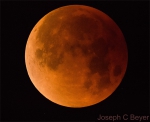
There was also a full moon the same night as the Mars Opposition. Because the Moon passed apogee (furthest point in orbit from Earth) just 15-hours before becoming full, it was classified as a micromoon. Furthermore, the Moon was eclipsed by the Earth’s shadow that evening for most everyone outside of North America, Central America, and Greenland. Those areas, however, did get to see a lunar eclipse back on January 31st. We have an image from that earlier eclipse featured in our “Tele Vue-85: Portable, Powerful, Photo-Visual APO” blog post. That post also highlighted the Tele Vue-85 APOs usage for deep-space, solar, and birding work.

The afterglow of the 2017 Great American Eclipse was present in our 2018 blog posts. In “Dr. Bruns at NEAF 2018” we described Dr. Donald Bruns’ visit to the Northeast Astronomy Forum (NEAF). In front of a standing room only audience, he gave his talk titled: Einstein was Right! Completing the 1919 Relativity Experiment at the 2017 Solar Eclipse. He explained how he was able to measure starlight bending around the Sun using our very own Tele Vue-NP101is (Nagler-Petzval APO) to an accuracy of 3% — the best ever in optical light. Dr. Bruns received the American Astronomical Society’s Chambliss Amateur Achievement Award for his tour de force in careful observing and calibration. We also recapped our experiences in totality in a 1-yr anniversary “Flashback: Great American Eclipse Aug. 21, 2017” blog post.
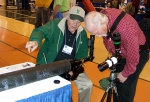
Our top equipment posts in terms of pageviews were all new-product or observing related. Leading the way was About the NEAF Night Vision Demonstration (a post that was published back in 2017!). It describes how we managed to do live demos of our Night Vision attachments at the well-lit vendor area of the Northeast Astronomy Forum. It also lists recommended eyepieces and techniques for working with the Night Vision monocular.
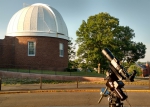
Bandmate Type 2 Nebustar Filter First-Light Report from July 2018 was another top post. It’s an observing report from the very first Tele Vue Bandmate Type 2 Nebustar filter owner in the country. He describes how the filter performs on the a 20″ Clark refractor, a 12.5″ Classical Cassegrain, and his own Tele Vue-85. The reviewer runs the public viewing program at Van Vleck Observatory and also relates his long history with Tele Vue and the Stellafane convention. Very interesting read!
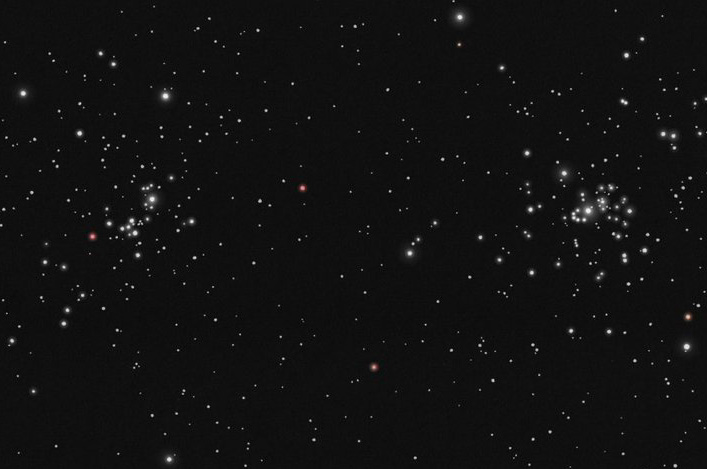
In our May 16, 2018 blog post we wrote: “At first-glance, our staff mistook the image … to be a photograph of the Double Cluster. It turned out NOT to be a photograph, but the deft work of talented hands and a good eye at the eyepiece.” This blog featured hand-drawn images of astronomical targets with our Paracorr and mostly Delos eyepieces through a 16″ Dob. Please read The Art of Deepsky Sketching at the Eyepiece to see these amazing images.
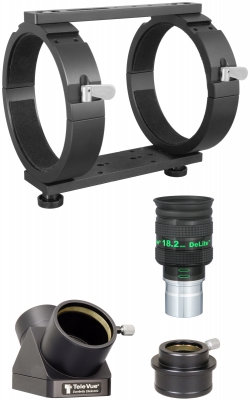
Our newly introduced OTAs and Telescope Accessory Packages posts garnered tons of pageviews. Read “Tele Vue NEW for 2018: TV-60, TV-76, TV-85 OTAs & Accessory Packages” to learn of the OTA and Accessory Packages for our smaller scopes (great for high portable astronomy, spotting and birding) and “Tele Vue NEW for 2018: NP101is, NP127is OTA Accessory Packages, SCT Rich Field Kits, & Diagonal Packages” for information on our larger scopes (great for visual / imaging) OTA and Accessory Packages.
We’d like to thank all our blog readers over the past year and especially those that subscribed to receive email notice of each new post. This year our subscriber count more than tripled! We’re looking forward to next year where we’ll continue to showcase the accomplishments of Tele Vue users, point-out key astronomical events with equipment suggestions, and let you be the first know of any new product developments!
More Info
- Tele Vue Telescope advice pages (mobile site)
- Tele Vue Eyepiece advice pages (mobile site)
- Tele Vue Powermate page (mobile site)
- Tele Vue Paracorr page (mobile site)
- Tele Vue BinoVue page (mobile site)
- Tele Vue Mount page (mobile site)



